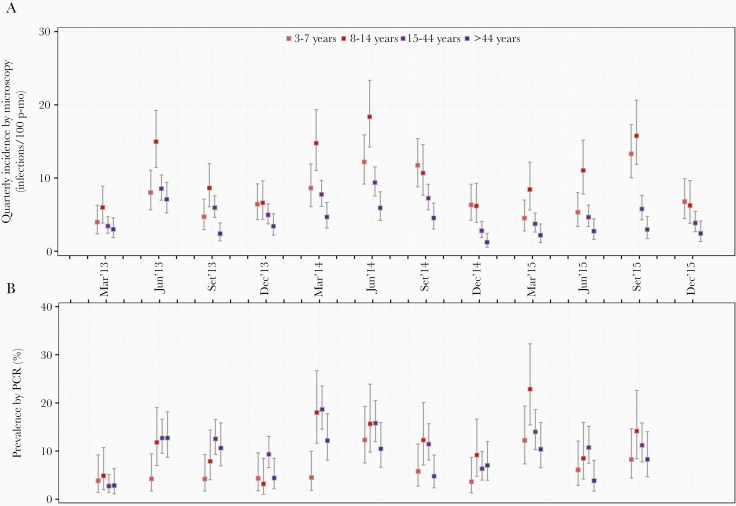Figure 3.
Quarterly incidence of P. vivax malaria infections detected by microscopy and prevalence by PCR stratified by age groups in Lupuna from January 2013 to December 2015. Dot plots show incidence/prevalence mean rates, and 95% confidence limits (95% CI) for each age group. The Byar’s approximation and the Wilson score method were respectively used to estimate CI for incidence and prevalence rates. Incidence rates were calculated for the periods January-March, April-June, July-September and October-December of each year. Significant differences in incidence rates between age groups were found in almost all trimesters (except January-March 2013 and September-December 2013) (P < .001), showing mostly higher incidence rates in individuals aged 8-14 years in comparison with those aged 15-44 years and >45 years (pair-wise post-hoc test, P < .05). Significant differences in prevalence between age groups were found in June 2013, March 2014, and March 2015 (P < .05). Pair-wise post-hoc tests showed that children aged 3-7 years had lower prevalence than individuals aged 15-44 years (P = .04) and >44 years (P = .04) in June 2013. Children aged 3-7 years had lower prevalence than those aged 8-14 years (P = .004) and 15-44 years in March 2014 (P = .001). While in March 2015, individuals aged 8-14 years had higher prevalence than those aged >44 years (P = .008).

